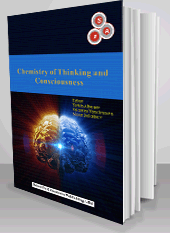Scientific & Academic Publishing
SAP is an open access publisher of journals covering a wide range of academic disciplines.
SAP is an open access publisher of journals covering a wide range of academic disciplines.

Description
The brain is the most complex and least studied organ of our body. Enzymes of the central nervous system catalyze the processes of energy supply to the brain, regulation of the synthesis and dissociation of neurotransmitters, synaptic transmission processes and many other significant processes. Having a mass of only 1-2 kg, it consumes 20% of energy. More than 70% of the genes of our genome actively work in its cells. Gray matter consists of more than 90 billion neurons, each of which has up to 10 thousand connections with other neurons.
Scientists from the University of California discovered a gene that is responsible for the human mind. This is a variation of the HMGA2 gene. They studied the causes of genetic diseases of the brain. The results of the experiment showed that people with a certain chemical structure of the HMGA2 gene are really endowed with high mental abilities. This is only if all other factors that determine the level of intelligence are equal. According to the results of the experiment, scientists believe that this gene can really make a person much smarter. They note that elementary changes in the genetic code can generate real geniuses.
Our task was to find patterns between chemical and mental processes in the brain. This would create a chemical model of consciousness and thinking.
Table of Contents
Chapter I: Chemical Composition of Brain
Chapter II: Chemistry of Nucleotides
Chapter III: Brain Chemistry Concept
Chapter IV: Model of Brain
Chapter V: Chemistry of Hyper Information
Chapter VI: Chemistry of Hyperconsciousness
Chapter VII: Chemistry of HyperBehavior
Chapter VIII: Chemistry of Memory
Chapter IX: Chemistry of Hyperthinking
Chapter X: Chemical Model of Thinking
Chapter XI: Chemistry of Genes
Chapter XII: Chemical Model of Consciousness
Chapter XIII: Theory of Networks of Chemical Reactions
Chapter XIV: Conclusions